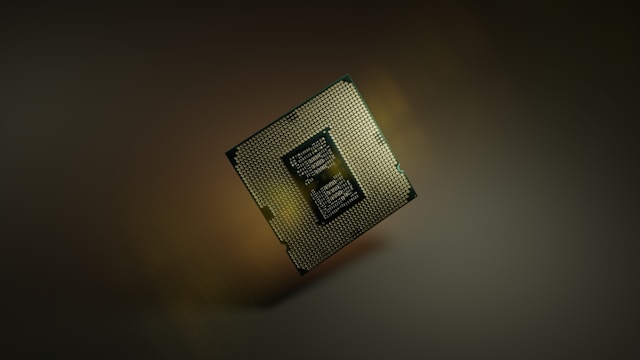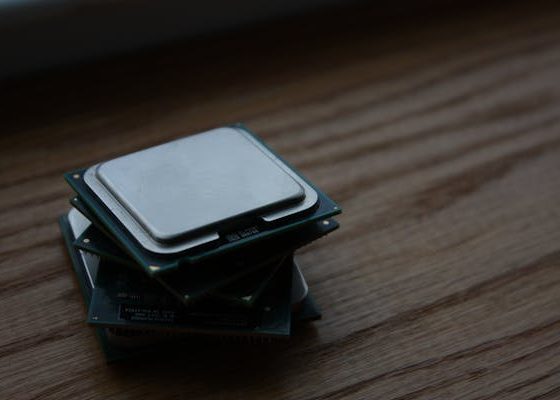Intel’s 14th Gen CPUs have arrived, and with them come exciting advancements in performance, power efficiency, and new architecture improvements. This latest generation of processors is positioned to be a game-changer in both desktop and laptop markets, offering high-end users, gamers, and professionals more options for enhanced computing experiences. In this detailed Intel 14th Gen CPU review, we’ll explore the architecture, performance gains, and feature set of these new chips, while examining how they stack up against previous generations and their competition.

Introduction to the Intel 14th Gen CPU
Intel’s 14th Gen CPUs, codenamed “Meteor Lake” for mobile processors and “Raptor Lake Refresh” for desktop variants, represent Intel’s continued evolution of its hybrid architecture. This generation brings a greater focus on efficient processing, enhanced core counts, improved AI capabilities, and significant gains in integrated graphics. With the rise of AI workloads, gaming demands, and power efficiency concerns, the Intel 14th Gen CPUs aim to deliver the balance of power and performance that modern users expect.
The biggest innovation with Intel’s 14th Gen processors is the introduction of the Intel 4 node, a 7nm process that leverages EUV (Extreme Ultraviolet) lithography to improve transistor density, performance, and power efficiency. This allows Intel to enhance its performance-per-watt metrics, making these CPUs particularly attractive for laptop and mobile device manufacturers. The desktop versions, which refresh the previous 13th Gen Raptor Lake architecture, also promise enhanced clock speeds and performance improvements.
2. Intel 14th Gen Architecture: A Technical Breakdown
a) Meteor Lake (Mobile CPUs)
Meteor Lake is Intel’s new architecture for mobile processors. It is built on the new Intel 4 process technology and introduces a modular chiplet (or “tile-based”) design. This design marks a departure from Intel’s traditional monolithic approach and aims to make the CPU more scalable, efficient, and flexible. The key components of this architecture include:
- Compute Tile: Houses the performance cores (P-cores) and efficiency cores (E-cores). Intel’s hybrid architecture, combining these two types of cores, is designed to optimize multi-threaded workloads by balancing high-performance tasks and low-power background tasks.
- Graphics Tile: This tile integrates Intel’s Xe-LPG architecture for integrated graphics, delivering significant gains in GPU performance. The enhanced integrated GPU performance is particularly important for lighter gaming, AI acceleration, and general multimedia tasks, making these processors ideal for thin-and-light laptops.
- SoC Tile: The System-on-Chip tile improves power management and integrates AI capabilities. AI is becoming an increasingly critical part of computing, and Intel has introduced dedicated hardware to accelerate AI workloads in this new architecture.
- IO Tile: This is responsible for handling the memory, input/output, and interconnect functions, improving the overall efficiency and data flow within the CPU.
b) Raptor Lake Refresh (Desktop CPUs)
While Meteor Lake focuses on mobile chips, Intel’s 14th Gen desktop processors are a refresh of the Raptor Lake architecture introduced with the 13th Gen lineup. The Raptor Lake Refresh maintains Intel’s hybrid architecture (P-cores and E-cores), with improvements in power efficiency and clock speeds.
Key features of Raptor Lake Refresh include:
- Higher Clock Speeds: Intel has fine-tuned the Raptor Lake architecture to achieve higher clock speeds across its desktop CPUs, which results in better performance in single-threaded and multi-threaded tasks, particularly gaming.
- Improved AI Performance: While the desktop chips don’t feature the same AI capabilities as Meteor Lake, Intel has optimized these CPUs for AI workloads through software enhancements and compatibility with AI acceleration technologies like Intel’s Deep Learning Boost.
- Increased Core Counts: The Raptor Lake Refresh offers a slight bump in core counts for certain SKUs, offering more multithreaded performance for demanding users.
3. Performance Improvements in the Intel 14th Gen CPU
One of the most anticipated aspects of any new CPU generation is the performance boost over previous generations. In our Intel 14th Gen CPU review, we explore how these processors deliver on Intel’s promises.
a) Single-Core Performance
Intel has long been known for its strong single-core performance, which is crucial for tasks like gaming and certain professional workloads. The 14th Gen CPUs build on the already impressive single-core capabilities of the 13th Gen chips by increasing the clock speeds and improving the underlying architecture.
Benchmarks show that the Intel 14th Gen CPUs deliver a notable increase in single-threaded performance. For instance, the flagship Raptor Lake Refresh desktop processor, the Intel Core i9-14900K, pushes the limits with clock speeds exceeding 6 GHz under optimal conditions. This performance boost makes it an excellent choice for gamers who need high frame rates and professionals who rely on fast processing times in single-threaded applications.
b) Multi-Core Performance
Intel’s hybrid architecture is designed to handle multi-core workloads efficiently. The 14th Gen CPUs continue to improve in this area by increasing core counts and optimizing power distribution between performance and efficiency cores.
In multi-threaded workloads, such as video editing, 3D rendering, and scientific simulations, the 14th Gen CPUs show substantial improvements over their predecessors. The addition of more E-cores in certain models, like the Core i7 and Core i9, means that the CPUs can better manage background tasks while still dedicating P-cores to intensive applications.
c) Gaming Performance
Gaming performance is a critical area where Intel excels, and the 14th Gen processors maintain Intel’s leadership in this category. With the increased clock speeds and improved single-threaded performance, these processors deliver higher frame rates in gaming compared to previous generations.
Gamers looking for high-end performance can rely on the Intel Core i9-14900K for its ability to handle the most demanding titles at high settings. Paired with a powerful GPU, Intel’s 14th Gen CPUs ensure that users can achieve smooth gameplay, even at 4K resolution. The Raptor Lake Refresh also continues to support technologies like DDR5 memory and PCIe 5.0, ensuring that gamers have access to the latest standards for high-performance components.
4. Power Efficiency and Thermal Management
Power efficiency has become a growing concern as CPUs become more powerful, especially for mobile devices like laptops. Intel’s 14th Gen processors tackle this issue head-on by improving performance-per-watt metrics, particularly in the Meteor Lake mobile CPUs.
a) Mobile Efficiency (Meteor Lake)
Meteor Lake is designed with efficiency in mind. The use of Intel 4 process technology, combined with the hybrid architecture, allows the mobile CPUs to deliver significant performance without draining the battery. This is achieved through smarter power management, where the SoC Tile optimizes how power is distributed to the different cores and tiles, ensuring that power-hungry tasks only consume what they need.
This results in longer battery life for laptops, even when performing demanding tasks such as video streaming, gaming, or running multiple applications simultaneously. For business users and students, this level of efficiency means that they can rely on their laptops for longer periods without needing to recharge frequently.
b) Desktop Efficiency (Raptor Lake Refresh)
While desktop CPUs are less concerned with battery life, power efficiency still plays a role in managing thermals and system stability, particularly for high-performance gaming rigs or workstations. The Raptor Lake Refresh improves efficiency by optimizing the power draw during idle and low-power states, allowing users to enjoy powerful performance when needed without excessive heat generation during lighter workloads.
For overclocking enthusiasts, the improved thermal management in the 14th Gen chips provides more headroom for pushing clock speeds higher without worrying about excessive heat. The combination of higher efficiency and improved cooling solutions ensures that even high-end desktop processors like the Core i9-14900K can be pushed to their limits without overheating.
5. AI and Machine Learning Capabilities
One of the standout features of the Intel 14th Gen CPUs, particularly in the mobile Meteor Lake lineup, is the focus on AI and machine learning workloads. As AI continues to grow in importance across industries, from content creation to data science, having dedicated hardware to accelerate these tasks is a significant advantage.
The Meteor Lake processors feature an enhanced AI engine within the SoC Tile, allowing for faster inference and machine learning tasks. This AI engine works in tandem with software optimizations to accelerate tasks like image recognition, language processing, and data analysis, all while minimizing the impact on power consumption.
For desktop users, while the AI capabilities are not as pronounced, Intel’s 14th Gen processors still benefit from AI-enhanced features like Deep Learning Boost, which helps accelerate certain machine learning workloads, particularly those that rely on AVX-512 instructions.
6. Intel 14th Gen CPU Comparison with Competitors
No Intel 14th Gen CPU review would be complete without comparing these processors to their main competition. In the desktop market, AMD’s Ryzen 7000 series processors continue to offer strong competition, particularly with their high core counts and energy efficiency. Meanwhile, in the mobile space, Apple’s M1 and M2 chips set new standards for power efficiency and integration.
a) Intel vs. AMD
Intel’s primary rival in the desktop CPU market is AMD, and with the Ryzen 7000 series based on the Zen 4 architecture, AMD continues to challenge Intel’s dominance. However, the Intel 14th Gen CPUs manage to hold their own, especially in gaming and single-threaded tasks, where Intel’s higher clock speeds give them an edge.
In multi-core workloads, AMD’s chips with higher core counts may still be preferable for users who need extreme multi-threaded performance, such as those working with 3D rendering or professional-grade video editing. However, Intel’s hybrid architecture and improvements in power efficiency make the 14th Gen CPUs a compelling option for a wider range of users.
b) Intel vs. Apple Silicon
In the mobile and laptop market, Intel faces stiff competition from Apple’s M1 and M2 chips, which are known for their incredible power efficiency and performance in a fanless design. While Intel’s 14th Gen mobile processors make significant strides in efficiency, particularly with the Meteor Lake architecture, Apple’s unified memory architecture and tightly integrated design still offer an advantage in terms of overall system performance and battery life.
However, for users who prefer Windows laptops or need the versatility of x86 applications, Intel’s 14th Gen CPUs provide an excellent balance of performance and efficiency. The improved integrated graphics and AI capabilities of Meteor Lake also give Intel an edge in certain multimedia and creative workloads.
Should You Upgrade to Intel 14th Gen?
The Intel 14th Gen CPUs represent a significant leap forward in both desktop and mobile processing. With Meteor Lake’s new architecture, Intel has demonstrated its commitment to improving power efficiency, graphics performance, and AI capabilities, making these processors ideal for modern laptops. The Raptor Lake Refresh, while not as revolutionary, offers noticeable gains in gaming, single-threaded tasks, and overall efficiency, making it a worthy upgrade for desktop users.
Conclusion
The Intel 14th Gen CPUs offer a compelling combination of performance, efficiency, and innovative features. Whether you’re a gamer, content creator, or professional user, this latest generation of processors has something to offer. With the improvements in core counts, clock speeds, AI acceleration, and power management, the 14th Gen chips cement Intel’s place as a leading player in the CPU market.
If you are in the market for a new processor, the Intel 14th Gen lineup provides excellent options for both desktops and laptops. The gaming performance, efficiency improvements, and AI integration make these CPUs a top choice for anyone looking for cutting-edge technology. However, the decision to upgrade depends on your current system and needs. For those on the 12th or 13th Gen, the jump may be more modest, but for older systems, this new generation is a significant upgrade.













